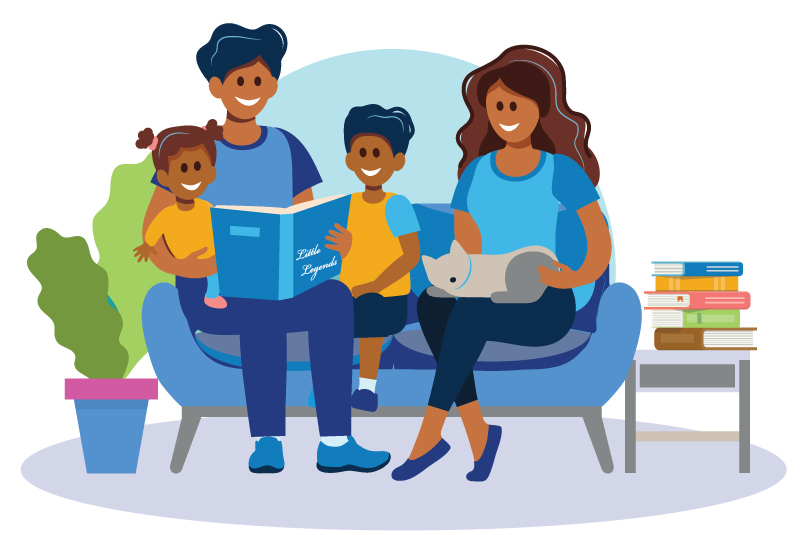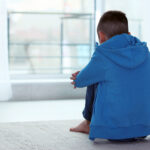A Juneteenth celebration of children’s books featuring Black characters

Books can provide a mirror for kids to understand themselves and a window into the world around them. Yet for many generations, Black characters were almost nonexistent in children’s books. Very often, the few that did appear were limited, with one kind of hair and one skin tone.
“Thinking about the books that were popular during my childhood, not many of them featured characters that looked like me. My parents had to search hard to find them,” says Keneisha Sinclair-McBride, psychologist in the Department of Psychiatry and Behavioral Sciences.
Happily, children’s literature has changed in recent years. These days, families can choose from an ever-growing selection of children’s books by and about people of a variety of races. Here, Sinclair-McBride discusses why diversity in children’s books is great for kids and recommends some of her favorite children’s books about Black families.
Why is it important for kids to read books with characters who look like them?
It’s really affirming for a child to see themselves reflected in the books they read: It can improve self-esteem and give them a feeling of belonging. In most children’s books, there’s a minor conflict or the characters learn an important lesson. These things are universal — seeing someone who looks like you going through everyday childhood challenges is really important, especially for underrepresented groups.
When my daughter saw this book, she said, ‘That looks like me and Daddy.'”
Keneisha Sinclair McBride
Books can also help kids see similarities between themselves and kids of other races and ethnicities. It offers a sense of, “Oh, we like many of the same things, and we’re also different in some ways.” When a young reader has beloved characters from diverse groups, they’re less likely to think of people who are different from them as “other.”
How can children’s books help parents teach their kids about race?
A lot of difficult things have happened in recent years and kids are looking to their parents to explain what’s going on. Books can help make difficult conversations less scary.
For example, Our Skin: A First Conversation About Race, talks about how people have different skin colors and explains the definition of racism in a very clear, affirming way. Parents of young children can start with this book to guide those early conversations.
Or if parents want to talk to their kids about the issue of violence against Asian people, there’s a children’s book called Eyes That Kiss in the Corners by Joanna Ho. It’s very affirming of Asian American identity. Reading that and having it in your house could be an important step toward helping your kids be allies for Asian American communities.
What should parents look for in children’s books with Black characters?
Start out looking for books that reflect your child’s interests. If your child is a dancer, for instance, they might really love Bunheads by Misty Copeland. (Copeland is the first Black female principal dancer in the American Ballet Theater.) There are so many great books out there now, it’s very likely parents will be able to find one that will connect with their child’s interests.
If a book is about characters of color, I think it’s important that authors and illustrators of color are involved in the creation of that book. This exposes kids to Black authors and artists and reinforces the idea that people of color can tell their own stories.
What if a parent’s favorite childhood book has racist overtones?
If you loved a certain book as a kid, I suggest reading it again, by yourself, before reading it with your kids. If you notice anything that might reinforce negative stereotypes, think about how you can have a conversation with your child. There’s a way to explain in simple, clear language that a book you grew up with reinforces negative stereotypes and we now know better.
Recommended children’s books by and about Black people
There are so many good books out there these days, but these are some of my favorites.

Our Skin: A First Conversation About Race by Megan Madison and Jessica Ralli, illustrated by Isabel Roxas
Ages 2 – 5
Introduces children to the idea that people have different skin tones and how all children can stand up for equality, in a fun, approachable way. This is a good tool for parents of young children who want to start a conversation about race.
Kamala Harris: Rooted in Justice by Nikki Grimes, illustrated by Laura Freeman
Ages 4 – 8
Vice President Kamala Harris’ life story, from growing up in Oakland with immigrant parents through her run for president of the United States.
Sulwe by Lupita Nyong’o, illustrated by Vashti Harrison
Ages 4 – 8
Sulwe is a girl with very dark skin who wishes she could have lighter skin like her big sister. Then her mom tells her a story about the night sky that changes her perspective. Kids may not get all the nuances at first, but this is the kind of book that can grow with you.
Hair Love by Matthew A. Cherry, illustrated by Vashti Harrison
Ages 5 – 6
A Black father helps his daughter appreciate her natural hair. When my daughter saw this, she said, “That looks like me and Daddy.”
Little Legends: Exceptional Men in Black History and
Little Leaders: Bold Women in Black History written and illustrated by Vashti Harrison
Ages 8 – 12
Illustrated biographies of men and women in Black history. These books are a good way to introduce kids to important people in Black history without boring them with a traditional history book.
Books for young adults

The Hate U Give by Angie Thomas
Sixteen-year-old Starr witnesses the fatal shooting of her childhood friend and has to confront racism, police brutality, and protests. This story is a powerful way for young people to learn about some of the issues they’ve been seeing in the news. In fact, I recommend anything by Angie Thomas. Her books are so well written and set in places that kids living in the city can relate to.
The Sun is Also a Star by Nicola Yoon
A Black girl and an Asian American boy fall in love in New York City. If you’re a teenager who enjoys love stories, you’re going to love it. It’s interesting, complicated, and very thoughtfully written.
Monday’s Not Coming by Tiffany D. Jackson
When her best friend goes missing and no one seems interested in finding her, Claudia tries to figure it out herself. This is a mystery recommended to me by a patient and I can’t wait to read it.
Learn more about the Department of Psychiatry and Behavioral Services and the Office of Health Equity and Inclusion.
Related Posts :
-

Making pediatric health equity research truly equitable: An EDI review process
A burgeoning number of studies are examining pediatric health equity, diversity, and inclusion (EDI). But if not done right, health ...
-

Firearm suicides in children and youth: A state-by-state look
At a time when mental health problems are skyrocketing, a new study provides one of the most comprehensive state-by-state accountings ...
-

Reversing the trend: Easing the mental health boarding crisis in emergency rooms
Anxiety, depression, and suicide attempts have been rising over the past decade, especially among teens, often landing them in emergency ...
-

Brain wiring predicted adolescents’ emotional health during COVID
The COVID-19 pandemic was emotionally devastating for many adolescents, disrupting their schooling and social/emotional development. Drawing on national data, ...





